
This is Part IV of a six part series on the newly approved Ely Resource Management Plan, which permanently eliminated almost 1.6 million acres of habitat and over a dozen wild horse Herd Management Areas in the Fall of 2008.
As the BLM Ely District was approving the elimination of wild horses within their jurisdiction, citing lack of “available” forage and water and scheduling emergency removals, they were also publishing an environmental assessment to analyze the impacts of adding 25 new water developments that would "especially benefit big game". (1)
Of these, 17 will be installed in wild horse Herd Management Areas (HMAs); Wilson Creek, Deer Lodge Canyon, Clover Mountains and Delamar Mountains, two of which BLM just zeroed out.
While BLM continually cites the need to reduce and remove wild horse populations to maintain the “thriving natural ecological balance”, that balance continues to be manipulated as BLM uses this logic to analyze and approve their partnership with Nevada Department of Wildlife.
Throughout the proposal, BLM provides various summaries of how these improvements will fence out wild horses but are necessary for continued expansions of big game range and populations, will allow them to utilize habitat they would otherwise be unable to occupy (non-naturally occurring), and how they will mitigate lost water sources from “other” human developments (that BLM is mostly in charge of approving).
While describing how expanding the big game populations will impact the area, BLM downplayed their impacts on available forage for wild horses as well as describing impacts to livestock grazing as “minimal”.
When it came to describing wild horse impacts to the expanding wildlife, BLM noted "the potential for increased competition" for forage due to wild horse presence, depending on the numbers and carrying capacity of the areas.
Of these, 17 will be installed in wild horse Herd Management Areas (HMAs); Wilson Creek, Deer Lodge Canyon, Clover Mountains and Delamar Mountains, two of which BLM just zeroed out.
While BLM continually cites the need to reduce and remove wild horse populations to maintain the “thriving natural ecological balance”, that balance continues to be manipulated as BLM uses this logic to analyze and approve their partnership with Nevada Department of Wildlife.
Throughout the proposal, BLM provides various summaries of how these improvements will fence out wild horses but are necessary for continued expansions of big game range and populations, will allow them to utilize habitat they would otherwise be unable to occupy (non-naturally occurring), and how they will mitigate lost water sources from “other” human developments (that BLM is mostly in charge of approving).
While describing how expanding the big game populations will impact the area, BLM downplayed their impacts on available forage for wild horses as well as describing impacts to livestock grazing as “minimal”.
When it came to describing wild horse impacts to the expanding wildlife, BLM noted "the potential for increased competition" for forage due to wild horse presence, depending on the numbers and carrying capacity of the areas.
Of course, no information was provided as to what these numbers are or will be or just what the carrying capacity actually is but asking them to publicly report this information, they just fall back on the old trusty "we don't manage wildlife" excuse. Really....
BLM also stated wild horses may be displaced, experience a disruption of normal behavioral patterns during the construction, implementation, or operation of some of the developments within the project area.
And what exactly does that mean? They may be displaced from implementation or operation of adding water to an area, water they are not allowed to access….
BLM also noted under Wildlife that “Some of these projects and actions could increase….competition for habitat niches” as well as, “[also] decrease forage quality, quantity, and composition.”
The first question is, increasing competition of habitat niches for whom? (Something BLM fails completely to address). And then there is this little gem “…forage quality, quantity and composition may decrease” but BLM goes ahead and approves the proposal anyway?
What a fabulous double standard these mammalian money trees seem to be privy too and what a difference between this and how BLM writes a wild horse and burro proposal!
Then BLM states, “According to the new Resource Management Plan (RMP), resources management would occur by watershed.”
Watershed, huh? So the RMP zeros out areas for wild horses because there is no water and once they have been officially approved for elimination, BLM turns around and approves adding water developments for big game to expand. BLM also reported that “in the past 25+ years, over 100 small game guzzlers and more than 76 big game guzzlers [have been] constructed throughout the Ely District”.
Anyone know how many water developments BLM provided in these same 25+ years for wild horses and/or burros? (Excluding the troughs in the long and short term holding facilities….)
Nevada Department of Wildlife (NDOW) was quoted by BLM regarding the 2008 big game populations as;
“pronghorn antelope are currently at record high populations” but “NDOW continues to augment populations and develop reliable water sources through their available habitat.”
Rocky Mountain Elk were cited as "...increasing marginally in 2007 with populations increasing during the past 10 years” but “NDOW estimates that less than half the potential elk habitat…is being utilized, owing in part to the lack of, or improper distribution of water sources.”
Remember the response issued by BLM Nevada State Director Ron Wenker on June 13, 2007, when wild horse advocates tried to sponsor a similar water development deal for wild horses?
In that response, Director Wenker stated, “Providing water (on either a temporary or long-term basis) is not a substitute for lack of forage.”
He went on to add, “BLM generally avoids developing artificial water (such as wells) for wild horses and burros. We try to rely on naturally occurring water instead. When we establish the appropriate management level (AML), we carefully consider the amount of forage and perennial water which is available. We attempt to achieve the goal of establishing a thriving natural ecological balance at the minimum feasible level of management. While we recognize that wild horses and burros do utilize artificially developed water sources, we try to make sure the animals are not dependent on these waters as their only source. This is because if horses depend on artificial water and that source should fail, their lives could be at risk.” Click Here to read Director Wenker’s letter in full.
Apparently, water developments for "wildlife" aren’t at risk of failing like they are for wild horses and burros. Additionally, their water developments allow big game to expand due to the “now available forage” that simultaneously isn’t available if they were installed for wild horses or burros. Also, while this same habitat is considered “unsuitable” for wild horses, turns out elk can potentially expand by over 50% of where they are currently found.
So does anyone else find BLMs management standards for wild horses and burros a tad hypocritical in comparison to big game species?
Yet isn’t BLM just doing what they are told after President Bush signed yet another Executive Order on August 17, 2007 mandating all agencies place hunting as a top priority, on Order that was blasted by Jeff Ruch, Executive Director of Public Employees for Environmental Responsibility (PEER) who stated, “This is political meddling posing as a conservation policy and reads like it was written by a lobbyist”. (2)
Now rumors are surfacing that President Elect Barack Obama may be leaning towards Mike Thompson, Safari Club Internationals top pick as our new Secretary of the Interior as the big bucks of big game continue to climb the public lands priority ladder.
For those of you interested in only the financial side of management, as this is the reason over 30,000 wild horses and burros lives are now at risk, listed in the May 2008 Agenda for the Nevada Board of Wildlife Commissioners was the sum of $15,864 for “Elk Damage Payment” to Double U Ranch.
So not only does Nevada Department of Wildlife have the funding to install 25 new water developments to expand big game populations, some of which is in now zeroed out wild horse territory, when it comes to managing elk, they don’t remove them, they just pay for damages - yet another perk of being on the right side of the “environmental” fence!
Trivia Question
While stories of our spiraling downward economies are dominating the news and Nevada continues to cut budget after budget in efforts to juggle statewide revenue shortfalls, how much was Nevada Department of Wildlife’s budget cut for fiscal year 2009?
(1) Big Game Wildlife Water Development Sites, EA NV-045-08-009, August 2008
(2) Environmental News Service (ENS) http://ens-newswire.com:80/ens/aug2007/2007-08-20-09.asp

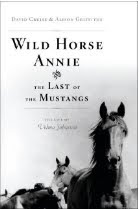








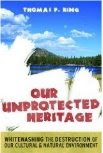



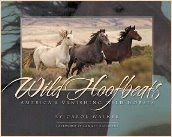




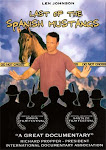





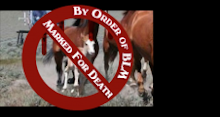

No comments:
Post a Comment